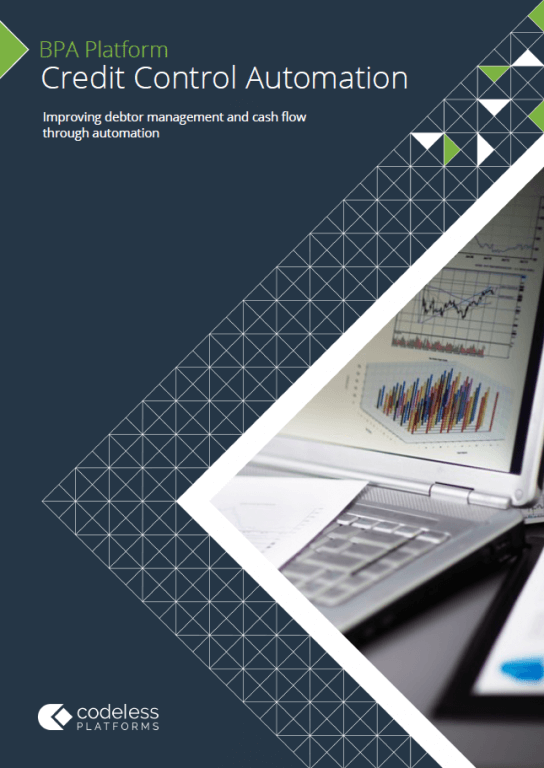Cash flow is the lifeblood of any company. It enables businesses to stay afloat and provides the capital required to pay suppliers and invest in assets that are needed, such as new equipment and inventory. Any interruptions or anomalies can have a significant effect – in the worst case scenario, the company actually entering receivership and going out of business.
It happens time and time again. Companies with good turnover on paper either simply not managing their cash flow or, sometimes, through no fault of their own, as a result of another company not paying up or going out of business with monies owed.
If the outgoing payments, such as rent, wages and production, outweigh the incoming, then there is going to be an issue with cash flow. It’s simple mathematics. It is therefore essential to keep an eye on cash flow before it becomes too late.
Managing credit control
One of the biggest contributors to poor cash flow is ineffective management of credit control. Credit control teams work tirelessly to ensure that processes and procedures are adhered to so that cash flow remains consistent and the cost of debt recovery is reduced. However, this is a time consuming, error prone and costly process. Factors such as personnel absences, the sales team applying pressure to trade harder with a client and customers absorbing account managers’ time can all hinder adherence to procedures and lack consistency.
Once an account has been created, you need to constantly monitor and evaluate. Just because the sales team think that a customer is important due to revenues, it may not actually be a profitable account. Ironically, you may find that some of your larger accounts are actually the ones causing the headaches. Does the customer have a bad history of paying? Do you constantly have to chase for payment?
The key to healthy cash flow is enforcing your credit control procedures consistently. Launching a credit control system doesn’t have to be complicated, but it’s essential to put some procedures in place. The basics include setting clear credit limits and payment terms for your customers, sending out invoices promptly, reporting on employee expense management and firmly chasing all debts when due. You should also stay on top of customer payments and be quick to stop offering credit to bad payers.
Automating credit control processes
Currently, too much reliance is placed upon employees to manually go through debt retrieval stages, which can prove to be extremely time-consuming and costly to SMEs of all sizes. This is why credit control professionals are turning towards finance automation technology to alleviate the burden of administrative procedures and maintain a consistent and professional relationship with trading partners and customers.
The automation of credit control processes can offer a significant advantage over manually operating systems. Business process automation (BPA) via Codeless Platforms not only provides accurate and timely debt chasing but it can also assist in automatically notifying associated personnel of impending and important dates.
From the outset, you need to know whether or not a customer is credit worthy. Reducing your exposure to bad debt can be achieved by gathering this intelligence from credit referencing services or other valuable data sources, so that your credit limit decisions are based on the very latest available intelligence on that company. These manual checks take time to process both in the first instance and as the relationship develops. However, with Codeless Platforms’ BPA Platform in place, it is possible to integrate your financial software with these online data services.
On a daily basis, the BPA Platform can run a task looking for bills that have been issued, how old they are and the payment status. Different Crystal Report and Microsoft Word documents can then be automatically generated depending on the relevant combinations. At the appropriate time, a letter can be sent to the client, informing them that payment is due imminently.
If the bill is not paid, a series of reminder letters can be sent chasing payment. At a certain point, if the account is still not settled, an email alert will be sent to the aged debt department. The fee earner will also be emailed, which gives them an opportunity to get involved and even resolve the issue.
Placing a customer’s account, strategic or not, on hold is a significant decision to make and is unlikely to be at the sole discretion of the credit controller. It is also the case that monitoring which customers should be placed on hold can represent a significant administrative task.
By utilising automation, workflow and integration, a decision to place an account on hold can be automatically sent to other decision makers for authorisation, rejection or contribution. Furthermore, the resulting decision can be applied to your financial, ERP or CRM software or emailed to other employees.
Is credit control automation right for your business?
It’s highly unlikely that aged debtors will disappear overnight, which means that the challenges facing finance directors must be to reduce the problems and costs associated with debt retrieval.
Automating credit control processes can ensure that business rules are enforced, employee errors are eradicated, aged debtor times are reduced and cash flow is strong and consistent. It will also relieve finance teams of repetitive administration.
For more information about how Codeless Platforms’ BPA Platform can automate your credit control processes download the brochure below or call us on +44 (0)330 998 8700.


